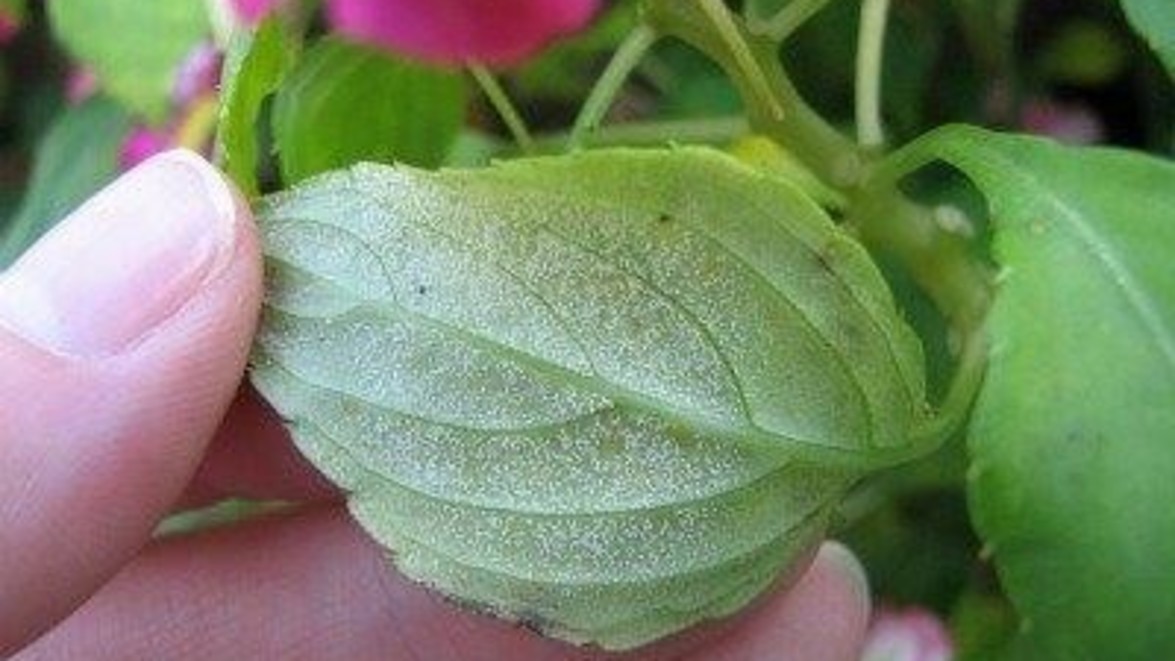
Unfortunately, one of our tried and true annuals has become susceptible to a disease known as impatiens downy mildew.
The downy mildew infecting impatiens is specific to *Imaptiens walleriana* (garden impatiens) and will not infect other plants. All seed and vegetative varieties of *Imaptiens walleriana* are susceptible to downy mildew. However, New Guinea impatiens is highly tolerant of this disease. Cool temperatures, especially at night, are ideal for rapid disease development. Moist air, rainy weather or irrigation practices that extend the amount of time moisture remains on the leaves also encourage the development and expression of downy mildew.
### Symptoms:
– A few leaves become slightly chlorotic or stippled & become completely yellow over time
– Some varieties will have subtle gray markings on the upper leaf surface
– A white, downy like growth may be present on the underside of primary yellow leaves (but can also be found on the underside of green leaves
– As the disease progresses, premature leaf drop results in bare, leafless stems
– Eventually the stems can become soft and the plant collapses (similar to frost damage)
### Caused by:
Impatiens downy mildew is caused by a fungus-like organism known as a water mold. This type of mold can be one of the most destructive plant pathogens due to their swimming spores that thrive in wet conditions and can spread incredibly fast. In response to changes in environmental conditions, the white spores that grow on the underside of the leaves can dislodge and become airborne, infecting other leaves and distant plants. In addition to the white spores on the outside, another type of spore may form on the inside of infected leaves or stems. These spores may survive in plant debris and be released into the soil as plants decay, surviving for a few years in the soil. Experiments and observations of existing landscape beds have shown that impatiens in infected soil will develop downy mildew.
### Quick tips for Homeowners to help prevent impatiens with downy mildew:
– Inspect plants carefully before buying them. Don’t buy plants that have any of the symptoms mentioned
– Wait until the weather is warm and settled before planting impatiens
– Don’t water or irrigate in the evening, make sure plants dry off before nightfall
– Try to avoid overhead watering if you can, use trickle irrigation at the roots or water containers so that you don’t wet the foliage
– Avoid mulch around impatiens as it can keep the soil surface moist and favorable for fungal spore survival
– Make sure to remove all impatiens plant parts, including roots, when frost has killed the plants or when you are ready to clean up the garden for winter
– If you had downy mildew last summer, avoid planting impatiens in that spot this year
To slow the spread of disease, closely inspect beds of *Impatiens walleriana*, promptly remove infected plants, and plant alternative flowers and foliage for the next two seasons in beds with a history of the disease. Alternative plants to grow in shady spots would be: New Guinea Impatiens, Torenia, Coleus, Begonia or Vinca.

